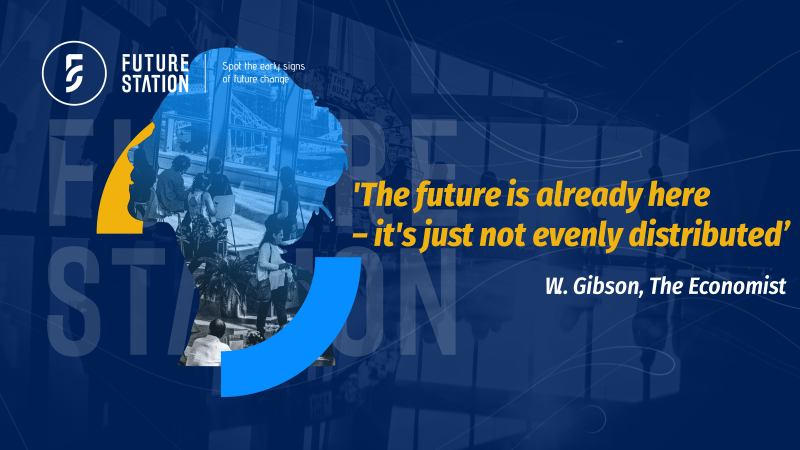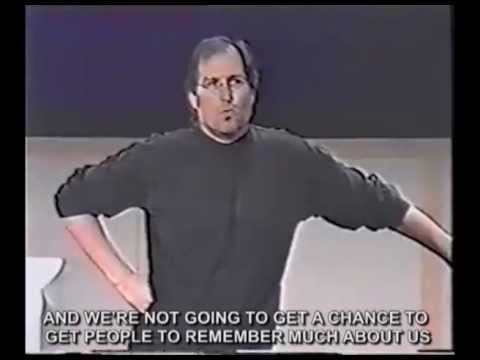The Future of the Events Industry: 4 Scenarios
The months pass and the number of Covid-19 deaths continues to increase. Even those who had resisted social distancing initially became sufficiently anxious, and the practice became the norm – with the help of some gentle and not-so-gentle governmental nudges.
The multiple initiatives on vaccine development failed to reach a conclusive result. People continued to try to find ways to live and work under the new constraints. Research into antibody testing is more successful, and eventually reliable and cheap testing kits with quick results become available.
Much of the events industry has shifted online following an initial period of shock. Events platforms (some end-to-end, some offering specific functionality only) spring up to cope with demand and are eventually swallowed up by two big players – Zoom and Microsoft Teams.
Events companies find themselves having to run events in parallel on both platforms as attendees are usually locked into one ecosystem and reluctant to use the other. After Apple runs a press event for the iMask in Fortnite, gaming companies begin to court event organizers, offering their servers and digital environments up as conference venues. The International Police Association’s global summit attracts much controversy when it is held inside Grand Theft Auto.
Organizers find themselves having to be creative in order to enhance value for attendees and find ways for sponsors and partner to promote themselves. It becomes typical to send attendees a physical kit ahead of the event containing reading material and promotional merchandise related to the topic.
With venues still inaccessible due to lockdown, the TEDx model also becomes popular, with many organizers licensing out their products to be run as smaller, more interactive online sessions. Many events organizers start experimenting with sending VR kits to attendees so that they can feel more immersed in the conference (for an enhanced ticket fee).
Among the topics discussed are: economic reconstruction, remote productivity, supply chain & logistics, and home baking.
This is a story about the future.
It is a future scenario narrative developed by James McLintock (UK-based Brand Strategist) after accepting my invitation for visioning a “Life in Isolation” future scenario in which social distancing becomes the norm in our society and there are no vaccines available yet.
What I love about scenarios is that it helps people live better with uncertainty. At its core, a scenario is a story, a view of how the future might unfold. This story triggers imagination and reflection by challenging current assumptions and known truths.
[bctt tweet=”Foresight Expert Diana Stafie on the future of the events industry: No more prizes for those predicting the future, but for those building future preparedness. #eventsindustry #foresight ” username=”brand_minds”]
But how did I get to such a “Life in Isolation” future scenario?
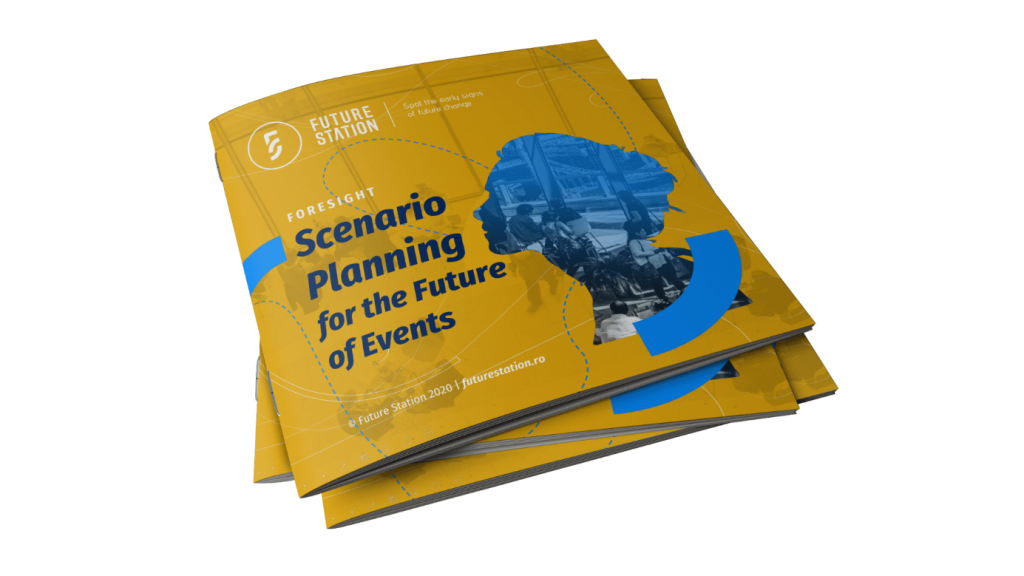
In a recent Foresight endeavour looking at the Future of Events industry, we created several alternative scenarios.
The steps followed are illustrated in our framework below:
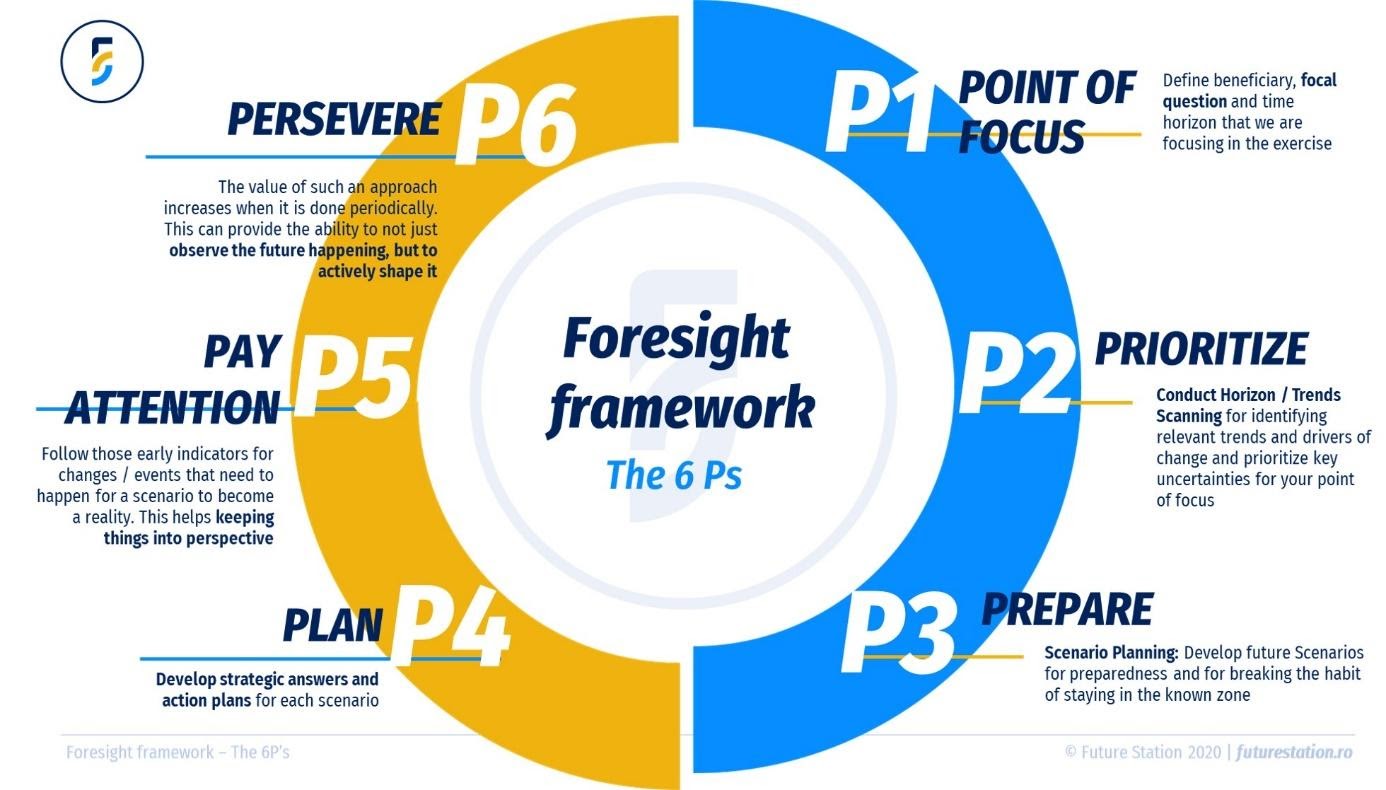
One of the most delicate steps is identifying the most important factors that will shape the future of the events industry in the chosen time horizon. And then assessing the (un) certainty of their future development.
Those for which we consider that there are multiple ways in which they could play out became our key uncertainties and were further used in developing alternative scenarios.
In the current uncertain times, when social beliefs and attitudes, regulations, markets could suffer tremendous change on a weekly basis, I think there are no more prizes for those predicting the future, but more for those building future preparedness.
Some of these key uncertainties and the extreme ways in which they could play out in the future are illustrated below:
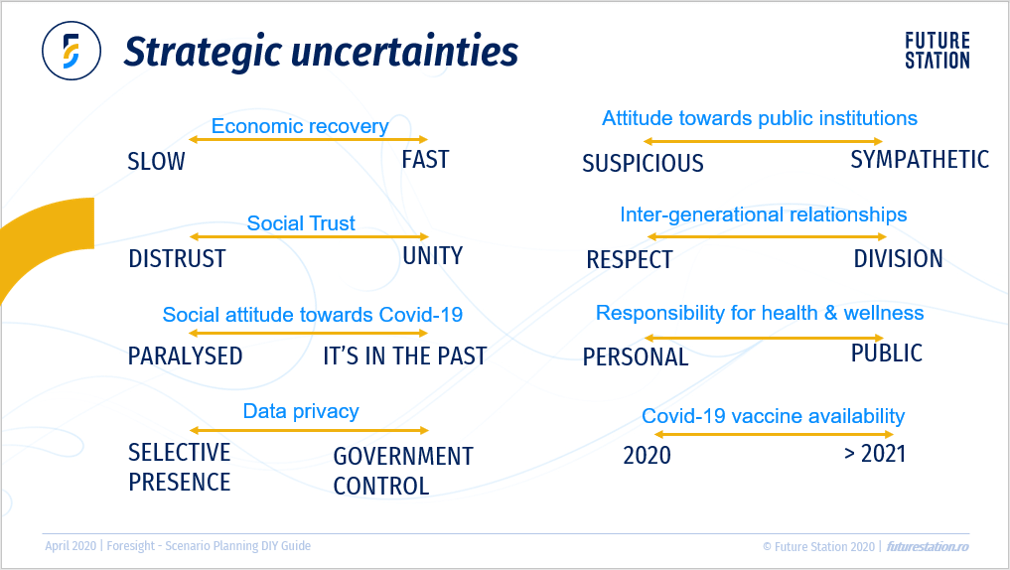
The Scenario Planning technique pairs two uncertainties (from different categories) to create a 2 x 2 matrix of possibilities.
Each quadrant of the matrix creates a possible scenario, a unique and specific possible future that emerges at the intersection of the extreme ways in which two uncertainties can unfold.
This thought exercise forces us to consider four very different sets of possible outcomes and enables us to think beyond our instinctual response and obvious assumptions.
Combining two of our uncertainties, we came up with the below 2×2 matrix:
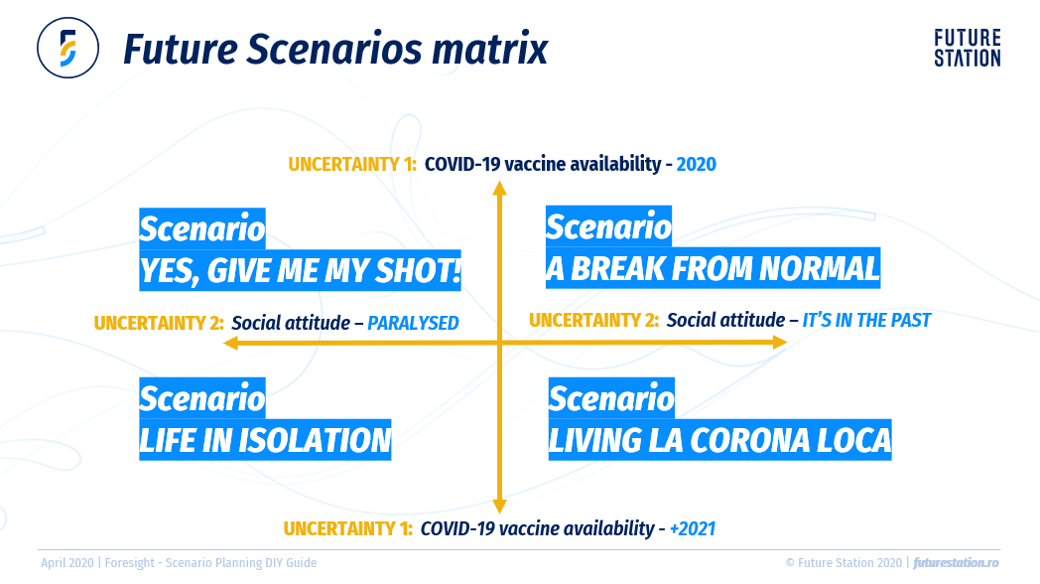
The lower-left quadrant is the “Life in Isolation” scenario visioned at the beginning of this article. Interestingly, a couple of weeks after developing these scenarios, we saw an indicator in the media – games being used as meeting environments.
Now, if you are in the events industry, I invite you to further explore #ScenarioPlanning and to consider:
What would your business and operating environment look like if similar scenarios became a reality?
What would your strategy be for each scenario?
Join the Conversation
We’d love to hear what you have to say.
Get in touch with us on our LinkedIn Group, Facebook Group or Twitter.
Scenario Planning and Foresight under Uncertainty
In this article:
- What is Scenario Planning?
- How to choose between Future-Driven Scenario and Decision-Driven Scenario
- The 4 Levels of Uncertainty
- Scenario Planning DIY Guide
- Conclusion
How can organizations facing uncertainties decide on their response?
Underestimating uncertainty can lead to strategies that neither defend against the threats nor take advantage of the opportunities. Just think of the famous underestimation made in 1943 by Thomas Watson, Chairman of IBM:
“I think there is a world market for maybe 5 computers”.
There is probably not one single approach that makes the challenges of leading in uncertainty go away.
What follows in this article is a model to use when assessing uncertainty and an overview of Scenario Planning as a possible tool for better decision making.
What is Scenario Planning?
While there have always been different views on the value and applicability of scenarios in business, I believe, these days, the business world needs more than ever to think in scenarios.
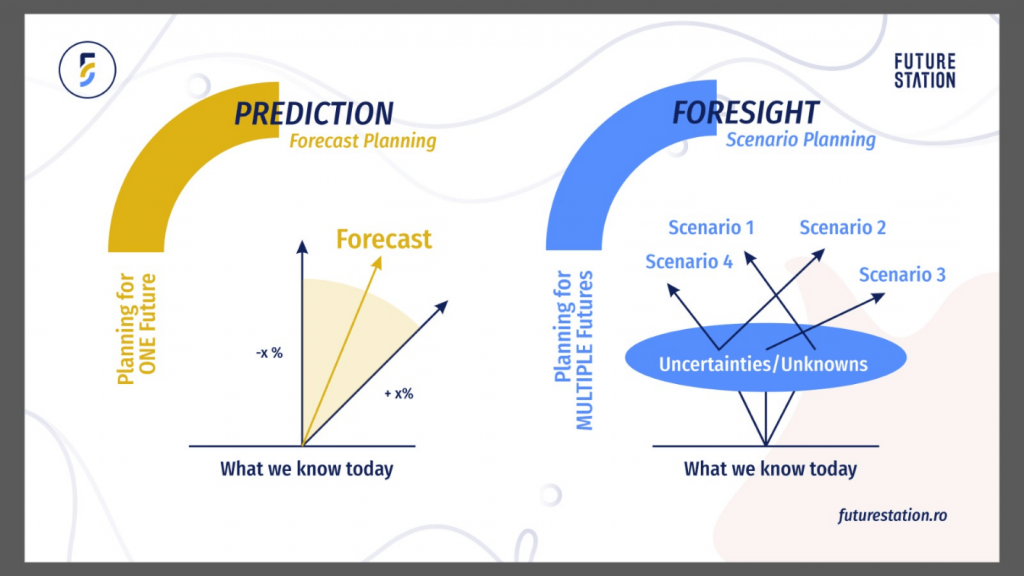
Source: Diana Stafie
The concept of Scenario Planning emerged after World War II as an approach for military planning.
Starting with the 60s, Scenarios Planning also permeated the business world as it helped leaders working with complex concepts and uncertainties to create coherent and plausible stories about the future they could work with when planning their strategies.
Scenario Planning is one of the tools we use in our Foresight practice (read here for more details).
What we love about it is that it helps people live better with uncertainty. At its core, a scenario is a story, a view of how the future might unfold. And that triggers imagination and reflection by challenging current assumptions and known truths.
When we talk about scenario planning, we can distinguish between the following two approaches: future-driven scenarios and decision-driven scenarios.
[bctt tweet=”Foresight expert Diana Stafie on Scenario Planning: Scenario Planning helps business people live better with uncertainty. ” username=”brand_minds”]
Future-Driven Scenarios
Future-driven scenarios help teams think beyond the known by questioning their assumptions and beliefs about the future.
Think of them as Exploratory scenarios: it helps organizations explore the new trends and signals of change, creating new strategic options, inspiring learning and conversations about possible futures.
This is typically an exercise we do with our clients as part of their strategy building exercises or when they are seeking future business opportunities.
It is also a very good tool to change mindsets and build openness to change.
Decision-Driven Scenarios
Decision-driven scenarios are used in choosing a certain strategic approach when faced with incomplete or uncertain information about the future:
Shall we build new capacity when we are not sure about the market demand?
Shall we enter this new market, launch this new product?
In these cases, scenarios may help determine the benefits and risks of the specific decision in various circumstances.
Most of our work in foresight deals with future-driven scenarios. However, as many leaders these days need to make important decisions regarding their business activity, we will focus on describing decision driven scenarios.
4 Levels of Uncertainty in Decision-Driven Scenarios
When building scenarios for decision making, Professor Hugh Courtney, author of the book 20/20 Foresight: Crafting Strategy in an Uncertain World – suggests tailoring the approach by assessing the level of uncertainty you are dealing with.
He identified four levels of uncertainty an organization could face:
Level 1 – The future is almost clear
Level 1 is when uncertainties are present, but their possible outcomes are narrow so it is relatively easy to choose a strategic answer.
For example, the variation of the rate of return in mature markets, or the reaction of customers to new strategies of well-known brands. In this case, you could simply model the impact of the uncertainty through a simulation and use traditional strategic tools (e.g. market research, Porter 5F,..)
Level 2 – There can be alternative futures
Level 2 is when uncertainties are limited to a few possible outcomes, such as the introduction of new regulations, or coming elections with different agendas on the table.
Such uncertainties may lead to divergent futures. In this case, we need to define in detail the possible outcomes for each situation and specify the implications for the strategic decisions we have in front of us.
What is important is to have different strategic options prepared for each scenario, with various risk returns.
Start by asking relevant What if questions: What if …happens, what shall we do?
For example:
What if a global pandemic blocks all interaction between people and business?
Level 3 – There is a range of futures ahead of us
Level 3 is when uncertainties can lead to a range of possible outcomes, such as the performance of new technologies, or market demand for new products, or the upcoming economic downturn.
A tool that we use in our Foresight practice is the Cone of Uncertainties and Possibilities.
The tool visually depicts the idea that there are many future possibilities and levels of uncertainty. More probable future’s paths are those closer to the centre, whereas in the outskirts of the cone you will find those possibilities with high uncertainty.
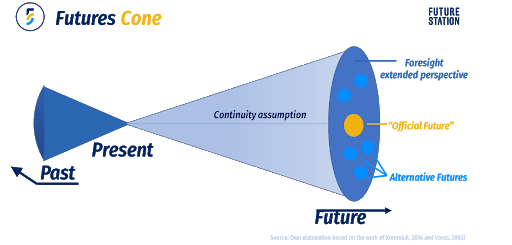
Source: Diana Stafie
In a situation with Level 3 uncertainty, we start by clearly describing the strategic question you need to answer.
You continue by identifying the major drivers of change and uncertainties ahead and, together with a team of experts from your company, choose the ones that you believe will impact your business the most.
By looking at the spectrum of possible outcomes for each uncertainty, build a limited number of scenarios that describe distinct, plausible futures.
Evaluate your strategic options against each of the scenarios and assess how robust each of your strategies or actions are. You will probably find it hard to calculate KPIs and numbers, therefore most decisions will rely on qualitative data.
Level 4 – The future is truly ambiguous
Level 4 is when you cannot define even a range of possible futures as perhaps you cannot even identify all relevant factors that will shape the future. This may happen in moments of major social or economic discontinuities.
In this case, a “scenario” is actually a set of beliefs about the future that would support a given strategic decision.
The process goes backwards as you basically need to ask yourself
What do I need to believe about the future in order to support this option?
What are the vulnerabilities in this scenario?
Is there anything I can do in order to reduce them?
The aim is to look for alternative short-term actions that would appear least vulnerable and which would perform well enough to meet our criteria for a good outcome.
You may test such scenarios only through logic, by comparison with other cases or lived experiences.
Our recommendation is to give special attention to those scenarios that you are not the most comfortable with.
Level 4 uncertainties, over time, tend to downgrade to a lower level. Therefore, once you start to gain an understanding of possible aspects that will shape the future, it may be relevant to rethink your scenarios and evaluate your strategy against the new ones (see Level 3).
Scenario Planning DIY Guide
At FutureStation, we have prepared a Scenario Planning DIY guide that can be used for building alternative scenarios (level 3 and exploring).
You can use the DIY Guide individually or in your teams for understanding the possible future scenarios for your business – email us for more details.
Conclusion
The level of uncertainty is company-specific and depends on factors such as level of preparedness, access to proprietary info, but also strategic positioning: is it a company that wants to shape or adapt to the future?
Whatever the reason behind building scenarios, what is most important is how you bring it “home”, in your organization and in your work.
Asking “what if” questions is essential to identify possible implications if scenarios come to life:
![]() What are the threats and opportunities in this scenario?
What are the threats and opportunities in this scenario?
![]() What actions shall we take to reduce vulnerabilities?
What actions shall we take to reduce vulnerabilities?
![]() What actions shall we take to build on the opportunities?
What actions shall we take to build on the opportunities?
![]() What elements/data do we need to watch out, so we know when to take action?
What elements/data do we need to watch out, so we know when to take action?
When done within teams, Scenario Planning is an exercise that builds commitment and inspires action. It triggers people to stay alert, follow closely what happens outside the company and inspires continuous learning.
Further reading:
20/20 Foresight: Crafting Strategy in an Uncertain World, Hugh Courtney
Decision Making under Deep Uncertainty: From Theory to Practice
Join the Conversation
We’d love to hear what you have to say.
Get in touch with us on our LinkedIn Group, Facebook Group or Twitter.
Ideas for Strategic Thinking in Marketing
Strategic Analysis
It’s the process of developing strategy for a business by researching the business and the environment in which it operates. A strategic analysis will be referred to as a SWOT analysis: Strengths, Weaknesses, Opportunities, and Threats. Within these four areas, you will define your organization’s position relative to the competition and operational environments. While many believe it is best used at the organizational level, when properly implemented, a SWOT analysis will often return targeted, productive results at division or departmental levels of business. More about this step you can read here.
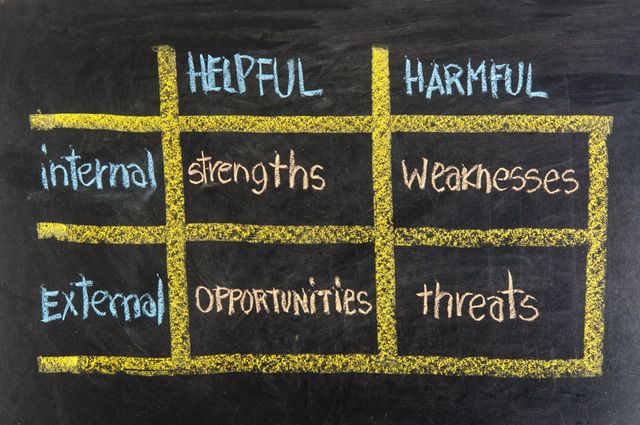
Scenario planning
The scenario planning technique constitutes a useful and practical way to think about the enterprise as a whole and its interaction with the environment. It refers to the formulation of alternative possible futures for the firm and its environment as a means of exploring the utility of different strategies. The scenario represented a landmark shift in management perspective, from a deterministic view (‘‘we can control our destiny’’) to the view that the future is intrinsically unpredictable (‘‘we need to envision a range of different
possible futures and prepare for them’’). Its pioneering implementation is usually attributed to Herman Kahn’s cold war studies at the RAND Corporation and the Hudson Institute and to Pierre Wack, who was head planner of the Royal Dutch Shell business environment division in the early 1970s.
other variables that reflect the overall progress of the firm towards its long-term objectives.
What’s most important is achieving high performance while balancing the needs of all the stakeholders.
